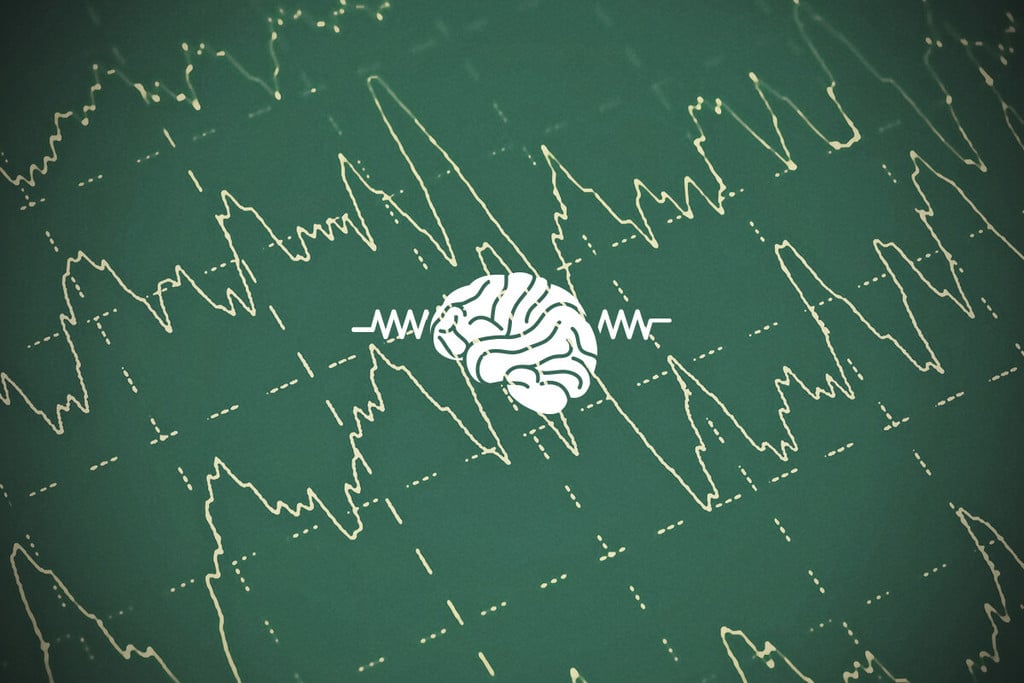.

Could Cannabis Help With Autism Spectrum Disorder (ASD)?
Autism spectrum disorder (ASD) affects how people interact and communicate with the world around them. For some, it can seriously affect how they live their lives and how others perceive them. Recent studies suggest an interaction between cannabis and ASD. Here we examine everything we know so far.
Contents:
Autism spectrum disorder (ASD) is related to brain development. It impacts how a person processes sensory stimuli and how they associate with others. According to the Centres for Disease Control and Prevention (CDC), about 1% of the world's population (over 75,000,000 people) has autism spectrum disorder.
Some studies suggest that cannabis may exhibit effects on specific characteristics of ASD. However, experts agree that more thorough human trials are needed to clarify the efficacy and safety of cannabis for ASD patients. Here we examine the facts around ASD, and whether cannabis demonstrates some real promise.
What Is Autism Spectrum Disorder?
Autism spectrum disorder affects how people interact and communicate with the world around them. Autistic people may:
- Encounter problems communicating and interacting with other people
- Struggle to understand how others feel or think
- Feel overwhelmed and uncomfortable with sensory confrontations like bright lights or loud noises
- Feel anxious or stressed when out of routine or when faced with unexpected situations and social events
- Require greater explanation of information; take longer to understand
- Act in patterns; perform the same things or think the same things continuously
Autism Is Different for Everyone
Autism is not classed as an illness or disease. Being autistic does not necessarily prevent someone from having a good or fulfilling life. Like everyone, autistic people have things they excel at and struggle with. Everybody with autism is different. Some autistic people have average intelligence, some above-average, and some have a learning disability—at its most severe, autism can be entirely debilitating. Some people may only need minimal support, or none; others may need help daily.
What Causes Autism?
The cause of autism is still unknown. It may affect people in the same family, meaning it can be hereditary; however, this is not always the case. Autistic people often have other conditions, including:
- Dyslexia
- Attention deficit hyperactivity disorder (ADHD)
- Depression or anxiety
- Epilepsy

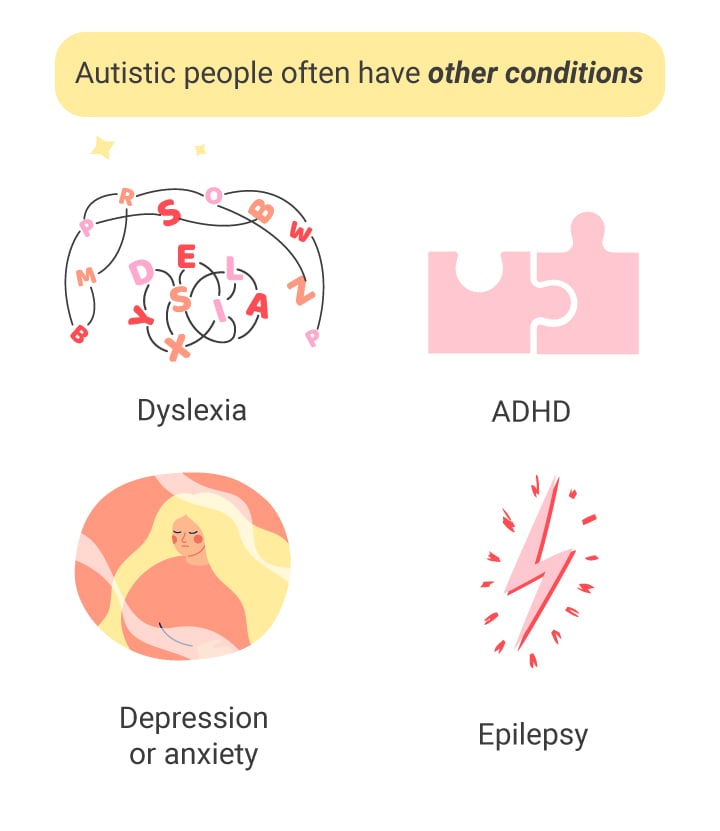
Autism can be diagnosed from early childhood up until adulthood. The number of autism diagnoses has shot up by over 700% within the past 20 years. The massive increase between 1998 and 2018 was more significant for females than males, with the most remarkable rise among adults. An increase in diagnosis due to increased awareness is commonly touted as the reason for the rise. However, experts cannot yet determine an actual increase in autism incidence.
Symptoms of Autism Spectrum Disorder
People with autism often share similar behavioural traits, which is how it is diagnosed. However, it is a very diverse disorder, and no two cases are exactly alike. Though some characteristics are more common, some people with autism may not exhibit any apparent symptoms.
With that said, below are some common traits of ASD.
Communication
Autistic people often have problems deciphering verbal and non-verbal cues such as body language, facial expressions, or tone of voice. Some autistic people may have limited speech. In contrast, others may have excellent language skills but struggle to understand sarcasm or tone of voice. Other traits include:
- Taking things literally, failing to understand abstract concepts
- Requiring additional time to process information or respond to questions
- Echolalia—repeating what others say to them
Social Interaction
Autistic people may struggle to recognise or understand other people's feelings and intentions or express their emotions. This can make navigating the social world difficult for them. Autistic people may:
1. Appear insensitive
2. Pursue time alone when overwhelmed by other people
3. Purposely avoid comfort from others
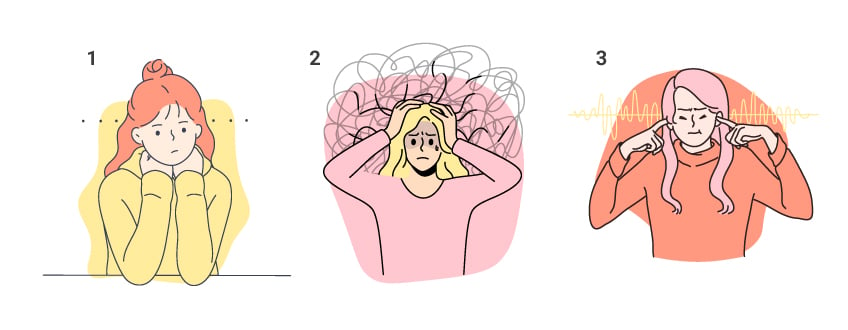
4. Behave "oddly" or in a way deemed to be socially inappropriate
5. Struggle to form and maintain friendships
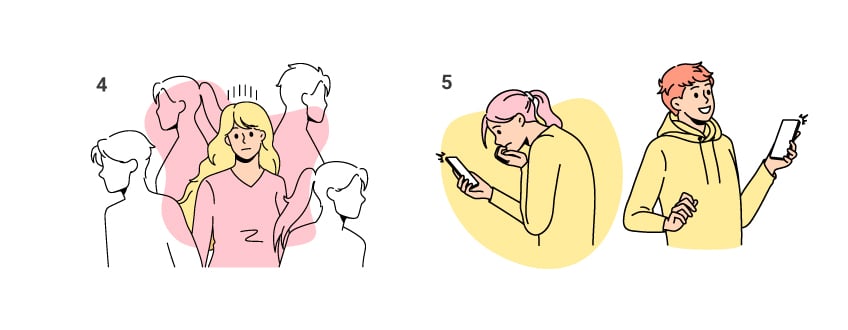
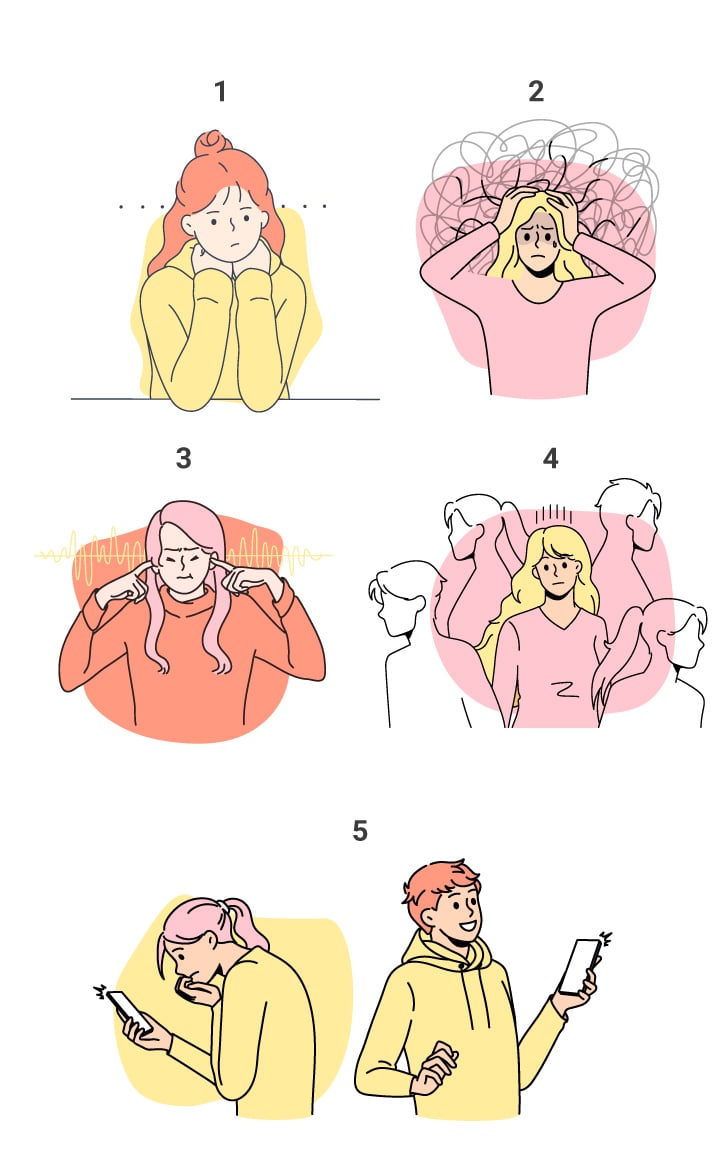
Repetitive, Restrictive Behaviour
Autistic people may like to travel the same route, wear the same clothes, or eat the same food for breakfast. Changes in routine can be very uncomfortable and make individuals very anxious.
Anxiety could present while the person is trying to accommodate events like Christmas, for example. Or, it can be more straightforward, such as facing uncertainty at work or a bus detour.
Movements such as hand flapping, rocking, or repetitive motions like pen tapping are common behaviours that help to calm an autistic person when stressed or anxious.
Sensory Sensitivity
Autistic people may encounter over or under-sensitivity (or both simultaneously) to sensory experiences, including touch, taste, smell, sound, light, and colour. Many autistic people prefer to avoid human contact, including handshakes or hugs.
This is a response that often portrays them as cold and standoffish. Some autistic people will avoid everyday situations because of their sensitivity issues.
Focused, Intense Interests
Many autistic people have highly focused interests. Autistic people can become experts in their interests and usually like to share their knowledge. They see their interests as fundamental to their happiness and gain extensive pleasure from pursuing them.
This high level of focus can help autistic people both academically and in the workplace. It is also possible for them to become so absorbed in specific topics that they begin to ignore other aspects of their lives.
Anxiety
Many autistic people struggle to recognise and control their emotions, with over one-third of diagnosed people also suffering from severe mental health issues. Anxiety is genuine and debilitating for many autistic individuals, especially when facing social situations or changes from the norm. It can significantly affect them psychologically and physically, adversely affecting their quality of life.
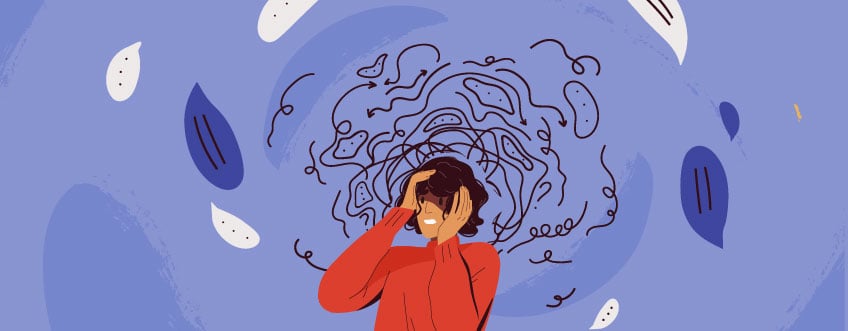
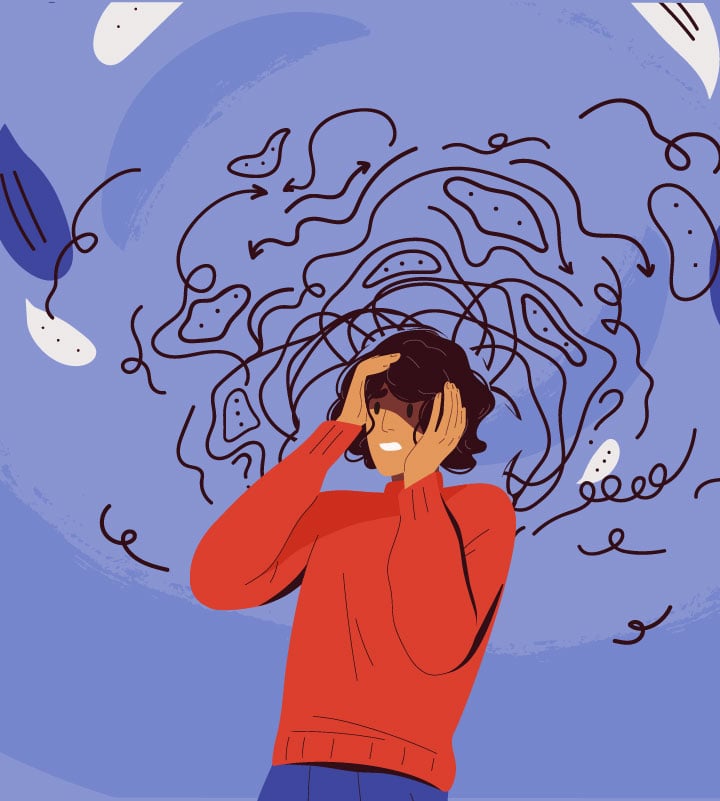
Meltdowns and Shutdowns
An autistic person can go into a meltdown or shutdown when everything becomes too much for them. These are very intense and exhausting experiences. A meltdown occurs when the person becomes overwhelmed by their situation, temporarily losing all behavioural control. This can present in many ways, including verbal abuse, shouting, screaming, and crying. Alternatively, it can be physical and include behaviours such as kicking, hitting, and biting.
Shutdowns involve the autistic person "switching off" or going quiet. However, they are just as frustrating as a meltdown because the sufferer cannot decipher how to react. The mind enters a state where it is past the point of being able to interpret feelings.
Autism in Young Children
Autism may present itself slightly differently in young children, with points of concern including:
- Not answering to their name
- Avoiding eye contact
- Failing to smile when you smile at them
- Becoming very upset if they find a particular taste, smell, or sound unpleasant or displeasing
- Repetitive movements and stimulating behaviours such as flapping their hands, flicking their fingers, or rocking
- Reduced verbal communication in comparison to peers
- Repetition of words or phrases
Cannabis and Autism
Over the last 10–15 years, there has been increased experimentation with cannabis in the realm of autism care. There is research to suggest that some of the compounds in cannabis can impact a scope of autism-related characteristics. However, research is still in the early stages. Here we explain what is known so far about the clinical potential and safety of cannabis in regard to autism and related conditions.
The Endocannabinoid System and Autism Spectrum Disorder
To give some context to this discussion, it’s key to consider the endocannabinoid system (ECS). This complex cell signalling system was identified in the 1990s when researchers were exploring the cannabinoid THC. The ECS helps to regulate a range of boldly processes and functions, including:
- Mood
- Sleep
- Memory
- Appetite
- Reproduction and fertility
The endocannabinoid system is made up primarily of cannabinoid receptors, endocannabinoids—which act as neurotransmitters—and enzymes that create and degrade endocannabinoids.
Endocannabinoids share many similarities with the cannabinoids found in cannabis, but they are produced naturally in the body. The two main endocannabinoids currently identified are:
- Anandamide (AEA)
- 2-Arachidonoylglycerol (2-AG)
These endocannabinoids help to keep internal functions running smoothly, and your body produces them on an as-needed basis.
Endocannabinoid receptors are found in various areas of the body. Endocannabinoids bind to these sites to stimulate one or more actions.
There are two primary endocannabinoid receptors:
- CB1 receptors—mainly found in the central nervous system
- CB2 receptors—primarily found in the immune system
The specific effects produced at these receptors depend on where the receptor is located, and to which substance it is binding.
In a 2013 study, researchers blocked CB1 receptors in mice to observe its effects on a model of fragile X syndrome (FXS), a disorder with similarities to autism, and the most common monogenic cause of autism. The study notes data associated with positive changes in seizure susceptibility and cognitive impairment.
Though this research is preliminary, it implicates the ECS as a potential physiological target in fragile X and autism research.
CBD
CBD is a cannabinoid with far-reaching influence. Like other cannabinoids, it interacts with CB1 and CB2 receptors, but it is not an agonist. In other words, it doesn’t stimulate the receptors like THC does. Instead, CBD is believed to work as a negative allosteric modulator of the CB1 receptor, inhibiting its binding affinity with other compounds.
But CBD also impacts receptors outside of the ECS, including those of the serotonergic system, and thus its effects are multifaceted.
A 2018 clinical trial of a synthetic CBD drug—administered in the form of a transdermal gel—shows significant effects concerning anxiety and other behavioural symptoms in children and adolescents suffering from fragile X syndrome. In terms of the cannabinoid’s mechanism of action, a report published on the drug’s safety and efficacy in 2022 references CBD’s relationship with CB1 receptors, 5HT1A serotonin receptors, and D2 (dopamine) receptors.
Other clinical trials have indicated that CBD may affect seizure frequency in individuals with CDKL5 deficiency disorder, a condition characterised by seizures and developmental delay. A 2018 trial[1] notes significant changes from baseline in monthly convulsive seizure frequency in subjects given Epidiolex from week 1 to week 12. This FDA-approved drug is chiefly implicated for rare forms of treatment-resistant epilepsy (TRE).
THC
As THC causes psychotropic effects, it is generally not implicated for child patients. However, administered in small amounts, it may have viable potential.
Several studies posit CBD and THC, in various ratios, to be more impactful on the behavioural symptoms of autism compared to one cannabinoid in isolation. A 2018 clinical trial found a 20:1 ratio of CBD to THC to affect aggressive outbursts[5] in around 61% of study subjects. Similarly, in a 2019 study, the same ratio was found to significantly impact the lives[6] of some children and teenagers with autism.
What are the Risks of Using Cannabis for Autism?
In both of the above studies, around one-third or fewer participants experienced adverse events, of which restlessness and sleep disturbance were most prevalent.
It is still not fully understood how cannabis affects the brain, especially in the long term. Some analysis shows that recreational cannabis use can negatively affect cognition, especially when used during adolescence.
However, in the realm of autism research, especially among children, non-psychotropic cannabinoids prevail—particularly CBD. And where THC is utilised, it is done so with the safety of patients at the forefront.
Still, it is not known how cannabinoids, even non-psychotropic ones, influence the developing brain of children and teenagers. Furthermore, there are potentially serious interactions with prescription drugs to consider.
The Future for Cannabis and Autism Spectrum Disorder
More research is needed before the medical world can endorse cannabis as useful for those living with ASD. However, there are some encouraging signs.
GW Pharmaceuticals, the manufacturer of the aforementioned Epidiolex, is currently running a trial of the drug for a neurodevelopmental condition related to autism called Rett syndrome[7]. This trial is focused on improving cognitive and behavioural issues, rather than preventing seizures.
The company is also seeking autistic children and teenagers to participate in a phase 2 trial of cannabidivarin[8] (CBDV), another cannabinoid found in cannabis. This trial will examine cannabidivarin's impact on a scope of traits in autistic children, including repetitive behaviour and general quality of life.
Even with the possibilities that limited trials have shown us, there is a need for more large-scale controlled studies on humans. As we learn more, we hope to see care for ASD patients become more expansive and targeted.
- Targeting the endocannabinoid system in the treatment of fragile X syndrome - PubMed https://pubmed.ncbi.nlm.nih.gov
- http://www.zynerba.com/wp-content/uploads/2022/07/ZYN2-CL-017_ASCP-2022_5.17.22_FINAL-for-Submission-FINAL.pdf
- Zynerba Pharmaceuticals Announces New FAB-C Phase 2 Open-Label Data in Patients with Fragile X Syndrome - Zynerba https://www.zynerba.com
- Open-label use of highly purified CBD (Epidiolex®) in patients with CDKL5 deficiency disorder and Aicardi, Dup15q, and Doose syndromes - PubMed https://pubmed.ncbi.nlm.nih.gov
- Cannabidiol Based Medical Cannabis in Children with Autism- a Retrospective Feasibility Study (P3.318) | Neurology https://n.neurology.org
- Real life Experience of Medical Cannabis Treatment in Autism: Analysis of Safety and Efficacy - PubMed https://pubmed.ncbi.nlm.nih.gov
- Efficacy and Safety of Cannabidiol Oral Solution (GWP42003-P, CBD-OS) in Patients With Rett Syndrome - Full Text View - ClinicalTrials.gov https://clinicaltrials.gov
- Cannabidivarin (CBDV) vs. Placebo in Children With Autism Spectrum Disorder (ASD) - Full Text View - ClinicalTrials.gov https://clinicaltrials.gov



























